What is four-wheel drive?
For as long as the automobile has existed, engineers and drivers alike have looked for better traction and agility. And four-wheel drive has proved the answer. Here's our complete guide.
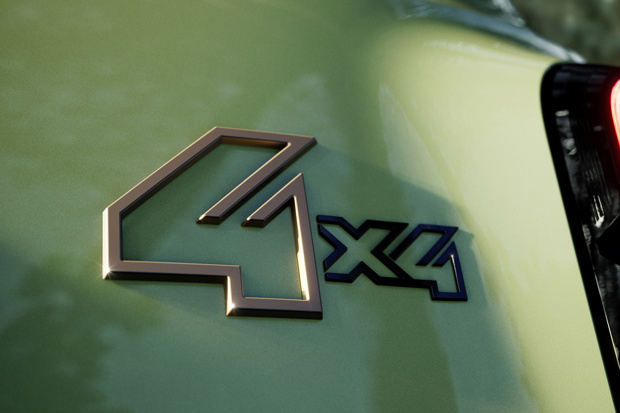
- How does 4WD work?
- What to look for when buying a used 4x4
- The origins of 4WD
How does four-wheel drive work?
A conventional, two-wheel drive car will drive one axle, using a differential to handle the difference in wheel speed when going around bends or driving over surfaces with unequal traction. Whether that’s front-wheel drive, or rear-wheel drive, the principle is the same though the layout of parts and complexity changes depending on the type of suspension and if the axle also steers.
A four-wheel drive version of a two-wheel drive car will add a propshaft and differential to the formerly passive axle - but how that drive is added is the biggest factor in choosing a 4x4, whether it's an off-roader, pickup, or car.
For the crudest systems such as early Subarus, many pickups, and the original Fiat Panda 4x4, there’s a simple lever to engage 4x4 when traction is poor.
Power is divided equally between front and rear regardless of traction or conditions. If one side of the vehicle has no traction, the system can spin two wheels - but as long as one end has grip for both wheels, the car will move. If all four wheels have grip and you try to turn, the difference in rotational speed means the car won't move.
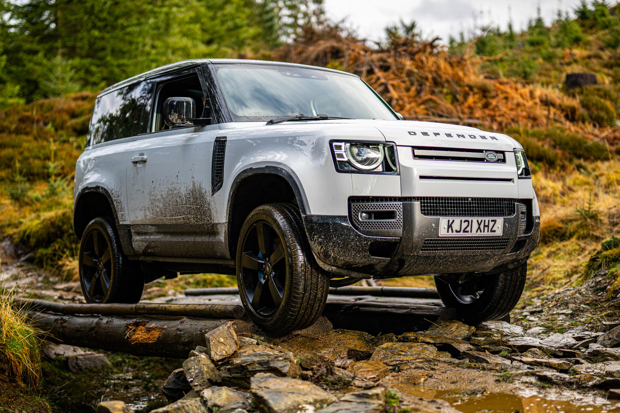
More sophisticated systems add a third differential between the front and rear axles. These ensure all the wheels receive torque regardless of angle and if one wheel has more or less traction, the difference is compensated for by the three differentials. However, if one wheel has no traction at all, in theory it can spin and the other three remain immobile.
Most all-wheel drive cars use something between these solutions. A slipping clutch that can vary the power or even disconnect entirely. As with high-performance two-wheel drive cars, a limited slip differential can also be used to ensure the power isn’t all wasted spinning a wheel.
Early systems would offer something even better – locking differentials. These days you’ll find only the most extreme 4x4s proudly showing their diff locks, but in the 1980s a normal Audi 90 quattro had a handy control to lock the centre and rear differentials. Ideal for pulling a trailer out of a wet field.
Modern systems often use a combination of techniques to obtain the best balance of efficiency, traction, and cost, and many of them hide the sophistication behind integrated vehicle stability and traction programmes.
Electric four-wheel drive
You’ll find all-wheel drive electric cars are more common than AWD cars, both new and secondhand. That’s because the electric motor is easier to control and cheaper to integrate – it has the benefits of extra traction for heavy vehicles. At least, within the boundaries of ‘having the right tyres’. As electric cars produce a lot of torque straight away, more grip is vital if the manufacturer wants headline-grabbing performance.
Some brands shout about the second, or even third, motor in their all-wheel drive EVs. Yet there are hybrid cars that feature a second motor as well. These may provide a limited boost in grip for low speeds and low traction (such as the Yaris Cross hybrid), or be focused on maximising performance and they often also have a benefit for economy.
For example, the Stellantis ‘Hybrid4’ system (developed by GKN) uses the rear axle motor in normal driving, bypassing the combustion engine and gearbox entirely – yet it can also use the rear motor for regeneration when the front axle is driven by the engine. The Mitsubishi Outlander PHEV uses a similar system.
Not all hybrids are equal though. You’ll find a traditional 4x4 system beneath some BMW, Mercedes and Mazda AWD hybrid models, as well as Land Rover and Range Rover where keeping old-school hardware seems appropriate.
Choosing a four-wheel drive vehicle
- Four wheel drive systems are usually part-time or full-time
- Full-time four-wheel drive systems can vary a lot in strength and ability
- Hybrid and electric four-wheel drive offers new solutions
When looking for a four-wheel drive vehicle your first question should be ‘when do I want it to be useful?’ If all you are concerned about is serious off-road and severe weather conditions, a part-time 4x4 system such as that found on the majority of pickups and some older 4x4 cars will be sufficient. If you regularly drive in storms, winter conditions or on mixed surfaces and want consistent grip, a full-time 4x4 system will offer the best solution.
Part-time 4x4
- Best for: off-road driving, towing heavy trailers in snow and mud, simplicity
- Drawbacks: cannot be used in dry conditions, often can’t be selected when moving
Part-time 4x4 is, confusingly, the type of four-wheel drive that always drives both axles. The idea is that you only engage it when conditions demand and at other times the vehicle is front or rear wheel drive. This is the easiest system to use in severe off-road conditions as it’s predictable and controllable.
But if left engaged on a grippy surface it will ‘wind up’ the moment the vehicle tries to turn, either spinning a wheel, locking up or even breaking the weakest part of the system.
You will find part-time 4x4 in older cars such as the original Fiat Panda 4x4, Toyota Tercel and early Subarus. It’s still common in new pickups such as the Isuzu D-Max, the Toyota Hilux and the SsangYong Musso - now the KGM Musso.

Full-time 4x4
- Best for: driving in poor weather conditions, ease of use in all types of vehicle
- Drawbacks: occasionally complex components, extra maintenance, reduced economy
Full-time 4x4 is also often called ‘all-wheel drive’, depending on the application. The most basic and least efficient design is a full set of three differentials. This can be defeated by one wheel losing traction unless it has a means to lock one or more of those differentials, but it is usually robust and predictable. The original Audi Quattro and Subaru’s first full-time 4x4 system, used this type of setup.
Later designs introduced ways of disconnecting one axle entirely, or controlling when it was engaged by detecting slip. The most common solution from 1969 to around 2010 is the ‘viscous coupling’, which uses a silicone fluid that solidifies with heat to engage both axles together gradually.
You will find this integrated into 4x4s that offer a choice of part-time and full-time 4x4, such as Mitsubishi Super-Select in the Mitsubishi L200 and Shogun, where it will often be paired with a low-range, locked mode for serious off-road control.
The principles of the viscous coupling evolved into new multi-plate clutch systems such as Haldex. Because they effectively ‘lock’ the centre differential by detecting slip from one of the axles, if you have mismatched tyre sizes due to wear or badly misaligned suspension and steering, the AWD setup can overheat and fail, causing excessive fuel consumption and wear.
A well-maintained viscous-coupled or Haldex four-wheel drive system can be effective and easy for any driver to use, with a relatively small impact on fuel economy. Because they rely on slip, systems without a manual override such as a ‘centre diff lock’ or ‘driving mode’ can be a little unnerving when driving on snow, but you’ll only find this with the cheaper 1990s AWD models, such as the Volkswagen Jetta Syncro.
Shift on the fly
- Best for: lightweight, simple four-wheel drive systems aimed at everyday drivers
- Drawbacks: has a learning curve to get the best from it, not automatically engaged
Shift on the fly is a marketing term to cover a variety of part-time 4x4 systems becoming more user-friendly. Either in the form of a mechanical control, or an electronic switch, the vehicle can be switched between two- and four-wheel drive while driving, usually at limited speeds.
Even when a 4x4 vehicle offers shift on the fly, It is unlikely to be usable with low or high range changes. For example, a Ranger Rover with electronic low-range control will hold your choice to shift until the vehicle stops. In many cases it’s better to stop before changing modes. A typical ‘shift on the fly’ system can be found in 1980s Subaru and Toyota models, with a big red AWD button on the gear lever.
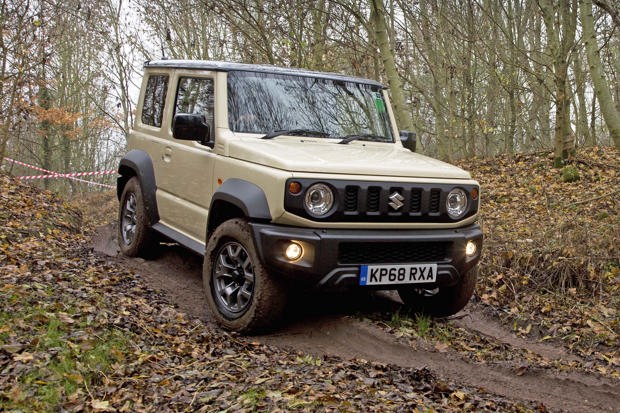
Buying a used four-wheel drive - what to look for
- Part-time systems can suffer failure of hubs and control linkages
- Full-time AWD can be sensitive to tyre size and wear
- Many systems need frequent fluid changes
When buying a secondhand 4x4 it’s important to know what kind of four-wheel drive system is used and how it should operate. Many cars, SUVs and pickups will spend most of their working life never using the 4x4 modes at all.
Not all models will tell the driver if AWD is in use, or report errors on the dashboard, so it's genuinely possible for an owner to drive a car with a faulty AWD system and be completely unaware of problems.
On a test drive, you can listen for whines, rumbles and whirring noises which may come and go with cornering, under power or coasting. These can indicate wear in bearings for propshaft or wheels, problems with differentials and gearbox issues. Some familiarity with 'normal' levels of noise for that model is helpful so try a few examples, starting with an approved-used/well maintained one if you can.
On the test drive, ask for the back seats to be folded and the parcel shelf removed, as this will give you a clearer idea of noise coming from the back. It's also worth winding the windows down when driving past a close wall or building, which can echo sounds you might not hear from inside the car.
If everything feels smooth and sounds right, see if there's a place with a loose surface such as sand, mud or gravel that you can legally try pulling away from standstill, turning and reversing. Encourage the wheels to spin a little and see if the traction light comes on, or anything snatches, grabs or knocks.
Be respectful of the car you're testing, if there's a fault it shouldn't take abuse to make it apparent. Remember that if you can't test this and a dealer has not disclosed a fault that shows up, you are protected by the Consumer Rights Act - but if it's a private sale you really want to test everything you can before buying.
Checking part-time 4x4: many 4x4s, most pickups
- A strong transfer box divides drive to front and rear wheels
- Modes are often selected by a direct lever, or a switch with a solenoid doing the same thing
- Two-wheel drive modes rely on disconnecting the front wheels from the axle
For vehicles with part time four-wheel drive – usually recognisable by a selector with 4L, 4H, 2H – the freewheeling/locking hubs on the front wheels will usually be the first part to give trouble as long as the selector linkages or solenoid have been maintained.
These are difficult to check unless you have access to a suitably loose surface. When checking on dry tarmac, you can perform some basic tests as long as you only drive in a straight line. Check that mechanical levers move into position easily with the car in neutral and any indicator lights change to show the system has engaged. You may hear a 'clonk' as the gears move for low range or vacuum operated hubs are locked.
Move forward, with the windows down and listen for rattles or chattering. Disengage the four-wheel drive and reverse - if the hubs are sticking, or worn, there will be more noise. In extreme cases faulty hubs can wear the driveshaft itself and require replacement of the CV joint.
Vacuum locking hubs automatically disengage, whereas older mechanical auto-locking hubs require the driver to reverse to disconnect the axle so the undriven wheels can spin freely.
Low-range may feel harsh and snatch as you engage the clutch, due to the lower gearing. Any attempt to turn on a dry surface will feel like the car wants to stop. Don't try to push it, at best, the car will stall. At worst, something will break.
If the system engages and disengages, confirmed by lights or dashboard messages where appropriate and drives smoothly in a straight-line test, the chances are it will be okay and any other issues such as worn gearboxes, bearings or bushes will show up on a two-wheel drive test drive. If the vehicle hops or drags at speed from the front axles, those locking hubs are misbehaving.

Checking full-time AWD: cars, upmarket SUVs and pickups
- Viscous couplings and various types of clutch either replace, or assist, centre differentials
- Recent models with torque vectoring may have four or five clutch packs and many sensors
- Fluid changes and tyre choice are essential maintenance, neglect is expensive
With ‘invisible’ all-wheel drive systems that automatically engage or are always engaged, the first thing to check is the condition and specification of the tyres. If there are new tyres on one axle and very worn tyres on the other axle, then the chances are the system has already been placed under stress.
Torque or slip-sensing AWD systems, even ones that offer a 2WD or 'Economy' mode, rely on all four wheels being the same diameter and even a small difference (3mm) in tread or mismatched tyres can force the car to apply four-wheel drive when it doesn't need to, wearing the system clutches or overheating fluid and pumps.
This weak point doesn’t just affect lighter, lower AWD cars. The early 2000s Jeep Grand Cherokee, with 4.7-litre V8, was notorious for failing transfer cases when drivers didn’t rotate the tyres and change them in sets of four.
In addition to the tyre maintenance, you want to look in the service history for evidence of viscous coupling fluid and filter changes. This is particularly important on Haldex-type systems and Japanese 'dual-pump' setups such as those used in the Honda CR-V and HR-V.
These lack the ability to fully disconnect the AWD system and also require 40,000 mile fluid changes. You’ll find this type of system across a broad range of vehicles from the first Land Rover Freelander to the Volkswagen Golf R and Audi RS3.

What to watch out for on used AWD cars
- Braking systems are just as important as transmission
- Garages may encourage buyers to disable AWD on older cars
- Suspension and exhaust components may be more expensive
When it comes to older AWD cars you’ll often hear phrases like ‘propshaft removed for economy’. It may be the case, but the economy is rarely at the pumps. The money they've saved is paying for repairs.
On transverse designs based on front-wheel drive models the weak point is usually where the drive is taken from the gearbox to the propshaft (intermediate drive, IRD or transfer shaft). This component is integrated into the front differential and as well being placed under undue load if the viscous coupling fails, it can also be damaged during maintenance such as clutch replacement.
As relatively sophisticated AWD systems are now approaching 30 years old, components such as brake calipers and ABS sensors may also cause problems. A lot of cheaper 'limited slip differential' solutions rely on brakes to stop a wheel from spinning, so sticking or dragging calipers can prevent that from working correctly. Any 4x4 with torque vectoring or trailer stability control will need brakes in good working order to be effective.
Buying parts can also get expensive for AWD versions of popular cars. The most obvious change you'll find is replacing a passive axle with an independent suspension system, subframe and differential.
This will also involve a unique exhaust routing, harder access for brake pipes, more points for rust and even unique shapes of fuel tank or suspension arms. The impact on parts cost and availability can be significant, particularly on rare models and cars out of production for more than ten years.
Although the principles are often the same, every manufacturer does things a little differently so research the model you want to buy carefully. Some four-wheel drive models have the potential to be very reliable if they have been cared for, others were designed to be sealed for life - and life is rarely more than 100,000 miles.
As a rule of thumb, the more recent the system, the more sensors and protections for the hardware are built in. Many older AWD cars won’t even tell you there’s an issue with the system - you’ll find a mechanical problem first.
A good diagnostic code reader is your best friend when buying a used car but the cheapest models rarely fetch codes from transmission modules. Make sure you borrow or buy one that offers full system coverage and you’ll find errors and issues reported that you may not notice on a test drive.
Four-wheel drive for better performance: torque vectoring
Some of the fastest four-wheel drive cars made don’t just use 4x4 as a passive safety net for grip, they proactively take advantage of modern technology to cheat physics and push the car in ways not achievable with steering, brake and throttle alone. Using sensors to determine speed, grip and how far the body is leaning, they can brake a single wheel to pull the car tighter into a bend, or apply power to an outside rear wheel in the same way, allowing it to exit a curve faster and with more control.
This is a feature first found on rally cars such as the Mitsubishi Evo X or supercars, but it can sometimes be found in rather less obvious places such as the Nissan Juke 4x4, or Mitsubishi Eclipse Cross. Improved clutch and braking systems combined with better computers and sensors make modern AWD cars formidable on fast winding roads in most conditions – as long as the brakes, tyres and suspension are well maintained.
Relatively recent innovations, such as GKN's 'Twinster' dual-clutch differential, are robust and capable of being tuned for different applications. The same basic technology gives the Range Rover Evoque impressive precision on sand and snow, and lets the 2016 Ford Focus RS drift impressively when the driver's skill is more suited to a gentle three-point turn.
There is a downside to the impressive capability of modern AWD systems. No matter how good the technology, the driver's judgement makes the final call on safe progress, and being able to go faster means that unexpected ice is all the more devastating. Whether off-road and crawling, or on the track and high-speed drifting, four-wheel drive is only useful when there's some friction between the wheels and the surface.
The origins of 4x4
Four-wheel drive is as old as steam power, with the first 4x4 setup using differentials dating back to Diplock’s 1893 traction engine. Early 4x4 cars were often focused on wartime use – yet passenger cars with all-wheel drive continued to develop. After a flurry of interest in the’80s and ‘90s, 4x4 returned to its off-road roots – now it’s making a comeback.
Where early systems were focused on unpaved roads and poor conditions, later innovations use all-wheel drive for performance and safety. Defined by the dominant layout of wheels, four-wheel drive indicates that every wheel receives torque – yet, not all systems are equal. And the era of electric power opens up new possibilities.
Initially limited to off-road vehicles and agricultural machinery, with crude systems that couldn’t be used on dry roads, Jeep and Land Rover civilised the 4x4 at the end of the 1960s with permanent four-wheel drive, better refinement, and more luxurious trim – both the Jeep Wagoneer and Range Rover can take credit for creating the modern SUV template.
Jeep and Range Rover are still off-road vehicles, however. After early, limited models such as the Jensen FF showcased the benefits of 4x4 for sports and performance, mass-market all-wheel drive cars caught on in the 1980s after two very different vehicles, from different sides of the Atlantic, combined all-wheel drive and everyday usability.
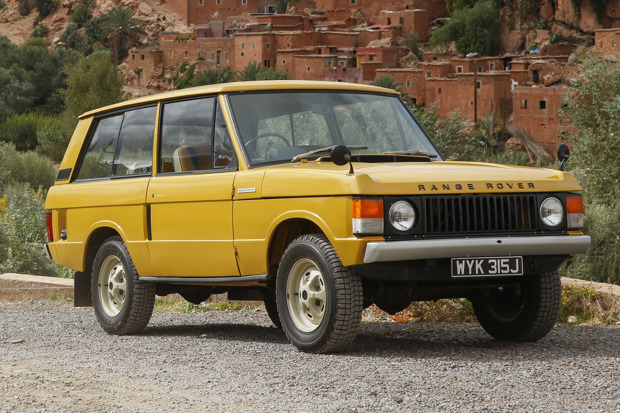
From bridleway to motorway - all-wheel drive evolves
In 1980 the Audi quattro became an overnight legend, using 4x4 technology developed for a small military vehicle to dominate rally stages before dominating the aspirations of middle-class buyers keen to stay safe in the snow. In Europe, quattro became synonymous with safety and performance and brands such as Ford, along with Mercedes and BMW were quick to offer equivalents.
Yet, it was America’s cash-strapped but clever American Motors that beat Audi to idea of a range of AWD cars. 1979’s AMC Eagle utilised already-dated bodyshells from the 1970s model range.
Most often associated with the estate (station wagon), you could also order a coupé, short (Kammback) hatchback, convertible, or a saloon. Next to Subaru’s part-time 4x4 system, the Formula-Ferguson derived AMC Eagle was versatile, safe and above all, easy for drivers of any ability to use.
It’s a surprise they didn’t make an AMC Pacer version, so much was recycled. Success for both marques was enough to inspire both an increased appetite for an improved generation of Subarus, and the introduction of all-wheel drive models of mainstream cars throughout the 1980s and ‘90s in cars as diverse as the Citroen AX, the Alfa Romeo 33 and the Peugeot 405.
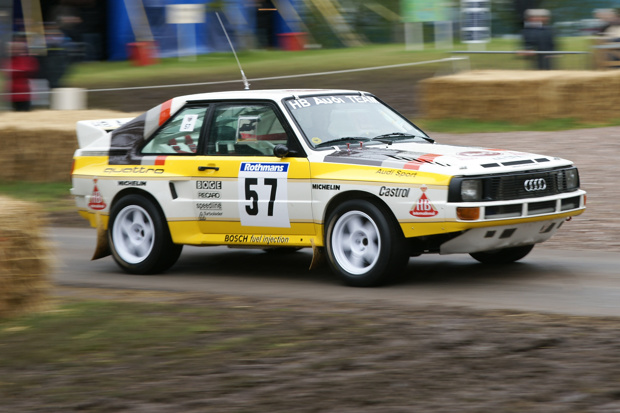
The decline of 4x4 cars – rebirth in EVs
As new tyre technology combined with ABS and electronic stability programmes improved wet-weather safety and grip in snow, a focus on economy and efficiency reduced the appeal of AWD models.
Most manufacturers abandoned their four-wheel drive options, leaving a couple of brands focused on 4x4 (Subaru, Suzuki, and Volvo’s ‘Cross Country’ range) alongside Audi as the obvious choice for drivers keen to have four-wheel drive security.
Even popular small 4x4s, exemplified by the Toyota RAV4 or Range Rover Evoque, were offered in two-wheel drive models. Reduced complexity and maintenance costs, with acceptable safety ensured through traction control and better engine management, kept the focus on reduced CO2 and improved economy, rather than ultimate off-road capability.
Chances are, you don’t need all-wheel drive if you choose the right tyres and the manufacturers were right to keep the look and height of a 4x4 without the complexity. However, there are some situations where there is no better solution than all-wheel drive with the right tyres. With the advent of electric cars and hybrid models, 4x4 is making a comeback.
Notable 4x4 cars, pickups and SUVs
If you want to narrow down your choice of four-wheel drive vehicle here's a quick guide that highlights just how different the various systems are. The classic Land Rover doesn't make the list, but the 1970-on Range Rover and subsequent coil-sprung Defender (and Stage One V8) and Discovery all feature full-time four-wheel drive that cannot be switched to two-wheel drive.
Mercedes G-Wagen
As the German (Austrian) answer to Land Rover's claim to be the best 4x4xFar, the Mercedes G-Wagen has evolved slowly since 1979. Now mostly associated with the ludicrous high-performance AMG models, the roots of the G-Wagen began with Austrian off-road experts Steyr-Puch.
Most civilian models have a full-time four-wheel drive system with strong components and a true mechanical centre differential that can cope with mismatched tyres, abuse and a lot of power, plus three differential locks are provided for off-road use. The latest models, introduced in 2019, feature independent front suspension for better on-road manners but remain formidable cross-country machines.
Subaru WRX STi
Subaru moved from the part-time 4WD system that built its reputation in the '70s to full-time AWD with the Legacy, Impreza and subsequent models. The technology used varies with gearbox and overall setup, so you can find a simple viscous coupling, or a full three-differential design with limited slip and electronic control.
The latter is what allows the Subaru WRX STi to be so effective as a rally car. Subaru's DCCD (Driver Controlled Centre Differential) is the pinnacle of affordable performance-focused AWD systems, though fifth-generation Haldex with eDiff and GKN Twinster come close to replicating the results if not the straightforward mechanical foundations.
.jpg?width=620)
Mitsubishi Super-Select
Over several generations of Mitsubishi off-roader, Super-Select has given these 4x4s an advantage over rivals - the ability to use all-wheel drive on the road, or two-wheel drive for economy. It's helpful for towing, particularly when exiting a wet field or building site onto dry tarmac and having to turn at the same time.
It's also beneficial for driving an unladen pickup in poor weather when the combination of rear-wheel drive and a relatively light back end can be dangerous. As a rule, higher-specification lifestyle models of Mitsubishi L200 feature Super Select, as does the Fiat Fullback, but utility models may have part-time 4x4.
Range Rover Evoque Dynamic Drive & Ford Focus RS
Tuned for very different results, the GKN 'Twinster' all-wheel drive system shows just how useful all-wheel drive can be. Relying on computer-controlled wet clutch packs and a myriad of sensors, the Range Rover Evoque can rival serious old-school off-roaders for control and agility
The Ford Focus RS takes a normally front-wheel drive design and adds the ability to send up to 70% of the car's torque to the back for a rear-wheel drive feel and, by regulating the balance between left and right, drift for sharper turns or just showing off.
Overall the GKN system has proven reliable since it's able to disconnect fully and compensate for very different inputs. However - it has stringent maintenance requirements and when it goes wrong, it really does need an expert approach to avoid just replacing expensive components.
